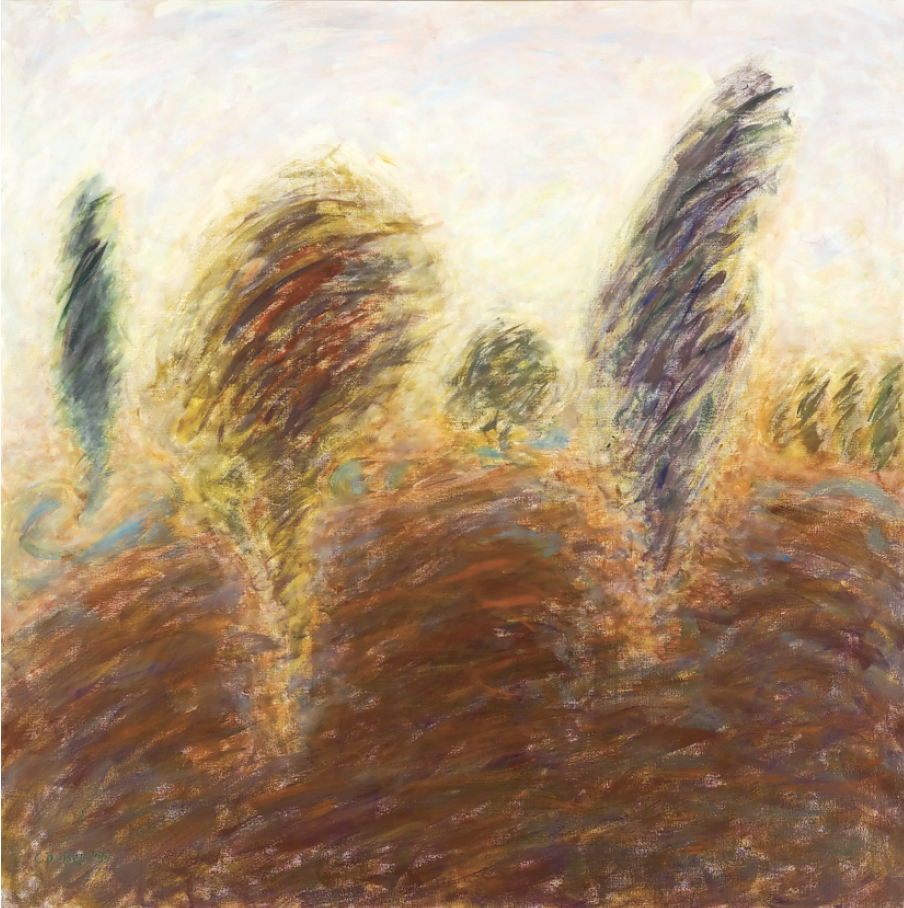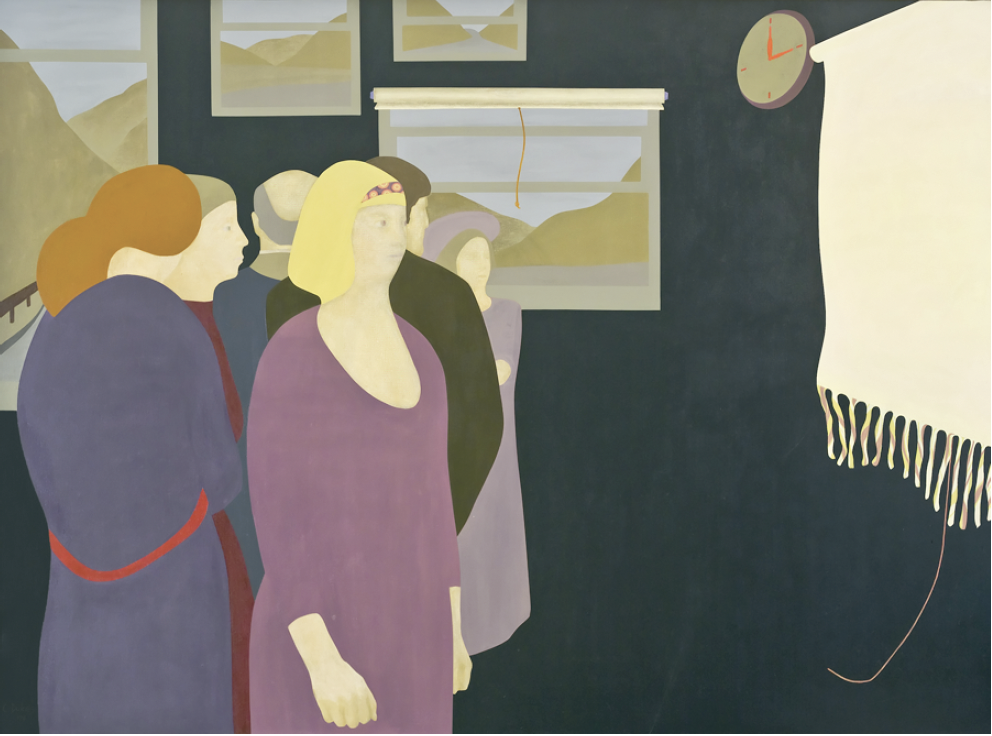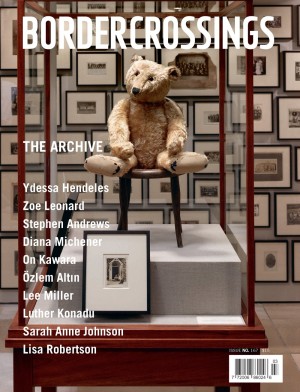Caroline Dukes
The art of Caroline Dukes, a Winnipeg-based painter who died in 2003, seems made for the retrospective form. Dukes has always been compelled to Remember … Relate … Retell, as the title of a 1996 installation hosted by Plug In ICA suggests. Having lived through the Nazi occupation of Budapest and the Stalinist rule of Hungary, she was consistently concerned with the layering of time, the reach of history, and the power of memory and imagination to acknowledge the past and—in some sense— to reconcile its cruelest contradictions. This exhibition at the Winnipeg Art Gallery, which spans over three decades of personal and artistic development, is retrospective in the fullest sense. Walking through rooms of Dukes’s large-scale paintings, you can see the different facets of her career resolve into a cumulative meditation on human experience as it is both bounded and expanded by time.

Caroline Dukes, Wind 1, 2000, acrylic on canvas. Collection of Caroline Dukes Artwork Trust.
The show begins with two self-portraits: one disarming in its ordinary, everyday realism, the other symbolic and slightly unsettling. In a small piece painted in 1959, shortly after Dukes and her husband Albert emigrated to Toronto, the artist offers a straight-on image that catches both her elfin slightness and her clear-eyed determination. The later work, from 1974, is so oblique that it’s a self-portrait in a psychological rather than a physical sense. A generalized female figure, seen from the back, half-raises her hands in an ambiguous gesture. In an image of carefully controlled Surrealism, the woman’s chest opens to reveal a caged bird.
After moving to Winnipeg with her husband and children, Dukes began studying in 1968 at the University of Manitoba’s School of Art. The theme of individual desire set against structured social systems occupies many of Dukes’s hard-edged pieces from the 1970s. Human figures, possessing the grave immobility of Piero della Francesca characters, are placed within rigid geometric spaces. These works are sombre in form as well as in theme with cool, flat blocks of taupe, teal, grey and plum. Perhaps reacting to the forced cheeriness of the state-approved Socialist Realism that dominated Hungarian art education during her youth, Dukes seems drawn to the angsty edges of existentialism. In depictions of old people stranded in a nursing home, or a mother and infant vastly separated within the same room, Dukes explores feelings of alienation and isolation.

Caroline Dukes, Landscape #1 (Self Portrait), 1974, acrylic on canvas. Collection of Caroline Dukes Artwork Trust.
As curator Mary Reid points out, Dukes’s recurring motifs are the female figure, the landscape, the tree and the building, images that are not only interrelated but often interchangeable: rolling hills become the curve of a woman’s hip, a tree contains a shadowy human form, a mother is absorbed into the clouds. These metamorphoses become more common when Dukes’s approach shifts in the 1980s to a brighter, looser style. Large-scale but never aggressive, her ’80s canvases are made up of kinetic, expressive brush strokes. In the gorgeous and radiant Landscape #30 and Landscape #31 (both from 1982), earth, water, sky and sun are seen as connected energies, and paint dissolves into pure light.
Underneath this riot of warm pigment, Dukes continues to explore tectonic forces. Some of her finest works use a painterly approach to incrementally build up the massive solidity of buildings. Colour and line, dynamism and control seem to be held in perfect, inevitable equipoise. These pieces also develop Dukes’s thematic concerns by revealing the secret lives and concealed memories of architectural structures. In Music School, 1996, from the “Cities” series, the building seems, from a distance, to be static and monolithic. Get up close, though, and you can see that it shifts and changes, its layered skin holding many histories. This particular music school is located in Munich, and at first the title seems to recall Germany’s position as a centre of post-Enlightenment European culture. Small hints— in the ’90s, Dukes starts to introduce materials like ripped book pages, fragments of sheet music and shards of broken glass into her works—remind us that the structure was once known as the Führer Building. This is Dukes’s economical, devastatingly effective way of representing the enormity of the Holocaust. Suddenly those bright windows hold not light but fire.

Caroline Dukes, The Unveiling, 1973, acrylic on canvas. Collection of Caroline Dukes Artwork Trust.
In another work, And They Made Us March …, 1991, a Jewish mother keeps cyanide pills for her children in a locket around her neck. Dukes’s mixed media piece—in which a heartbreakingly innocent black-and-white photograph is shaded by the brutality of 20th-century history— conveys unimaginable suffering. But, as with so many works in this retrospective, it also speaks to the power of memory to recall and retell what is lost. ■
“Caroline Dukes: Concealed Memories,” curated by Mary Reid, was exhibited at the Winnipeg Art Gallery from July 25 to October 19, 2008.
Alison Gillmor writes about popular culture for the Winnipeg Free Press and writes about literature and visual arts for CBC Arts and Entertainment online.

